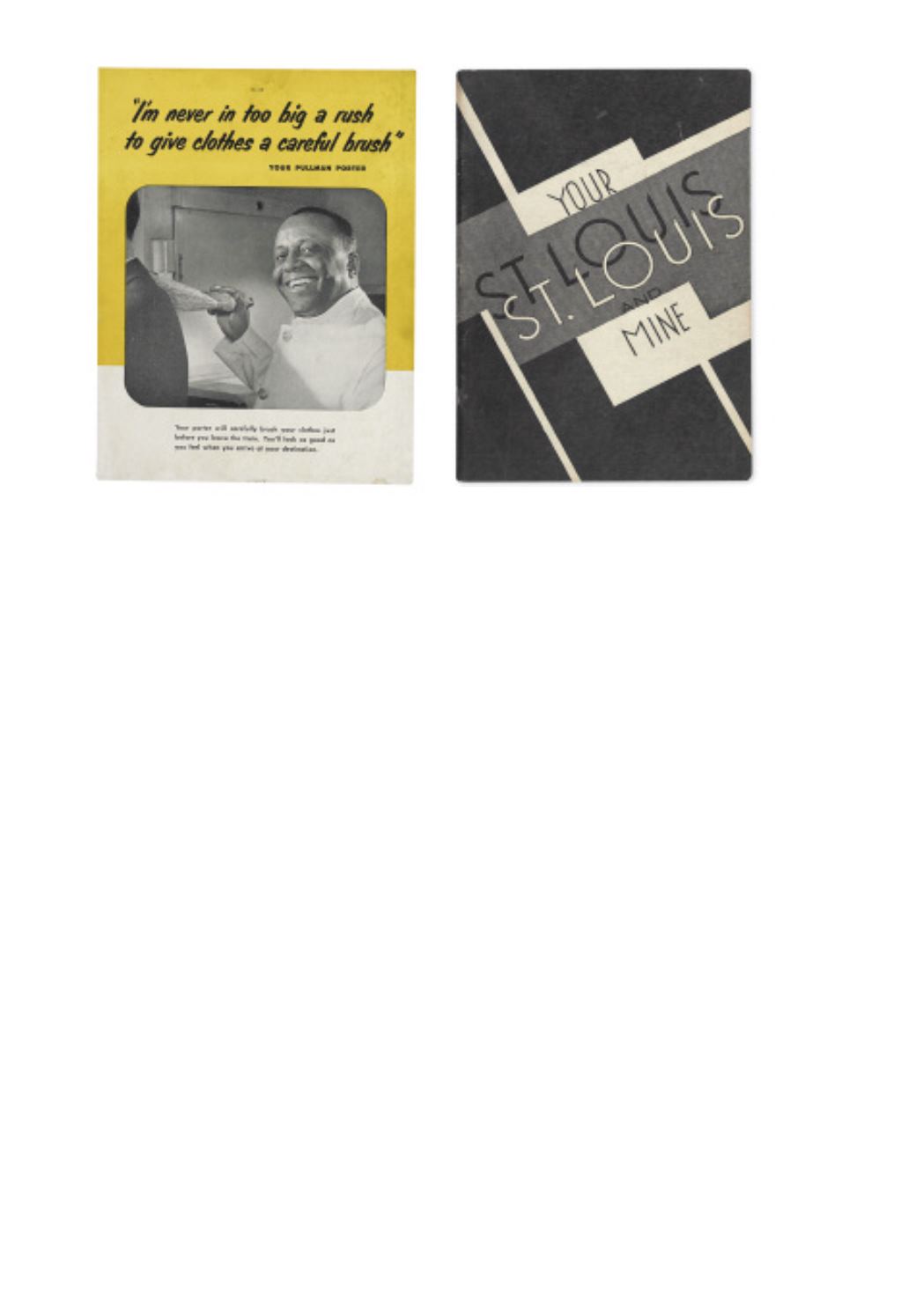

267
●
(BUSINESS.) PULLMAN PORTERS.
“Just give a ring when you want
anything” * “I’m never in too big a rush to give clothes a careful brush.”
Two
small pictorial Pullman Porter signs, 10
3
⁄
4
x 8
1
⁄
4
inches, printed in black, white and yellow.
Np, circa 1940’s
[400/600]
This pair of signs each bear a tiny sequential number (148, 149) indicating a large total number,
probably gotten up to be placed in train stations.
268
●
(BOY SCOUTS OF AMERICA.) POOLE, PAUL, PHOTOGRAPHER.
Group
photograph of the first Negro Boy Scout troop.
Silver print photograph, sepia
toned, 8 x 10 inches on the original photographer’s mount, 11 x 13 inches.
[Atlanta, circa 1920]
[1,000/1,500]
A RARE GROUP IMAGE OF AN EARLY AFRICAN AMERICAN BOY SCOUT TROOP
. The first
African American council was founded in 1911 in Elizabeth City, North Carolina, amid much hue
and cry from the all-white “Boy Scouts of America.” Despite the animosity and even threats, black
scouts continued to organize and meet. By 1926 there were 248 all black councils with 4923 scouts.
Within ten years, there was only one council in the deep South that still refused to admit black mem-
bers. The Boy Scouts were originally the creation of General Robert Baden-Powell, an English
reformer. The idea was to provide young men with something to occupy them and at the same time
teach moral and ethical values. These boys of various ages represent different levels from “cub” to
“eagle” are posed with their back-packs in front of them.
269
●
YOUNG, N[ATHAN] .B., Editor.
Your St. Louis and Mine.
Copious illustra-
tions throughout. 80 pages. Small 4to, original decorative stiff black and white wrappers.
St. Louis, MO, 1937
[400/600]
AN EXCEPTIONAL COPY OF AN EXCEPTIONAL DIRECTORY
compiled and edited by Nathan B.
Young Jr. (1893-1993). Young was the co-founder of the St. Louis American. He published edited
the newspaper for more than 40 years. The pages of “Your St. Louis” are filled with historical articles
and current civil rights-oriented material: columns like “What’s Wrong and What’s Right,” “Who
was Dred Scott,” and “Where in Politics” all aim to educate the reader as well as inform. The direc-
tory introduces readers to Elmer Simms Campbell, the artist behind the gorgeous pin-up girls in
Esquire Magazine, and features a full-page article on Josephine Baker. One of the most sophisticated
productions we have ever seen. OCLC locates 7 copies.
267
269










